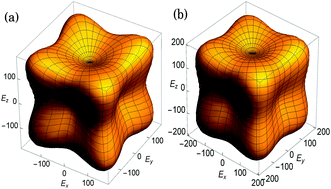Electronic, elastic and X-ray spectroscopic properties of direct and inverse full Heusler compounds Co2FeAl and Fe2CoAl, promising materials for spintronic applications: a DFT+U approach
Abstract
Half-metallicity, low magnetic damping and high Curie temperatures (TC) are crucial for application in spintronics and full Heusler alloys are promising in this regard. Herein, we have considered Co2FeAl (CFA) and Fe2CoAl (FCA) as representatives of direct and indirect full Heusler compounds which crystallize in L21 and C1b phases, respectively. The theory of L21 type Heusler alloys has been well established; however the fundamental understanding of Fe2CoAl is still under developed. In this paper, we have employed density functional theory (DFT) to study the electronic, elastic and X-ray spectroscopic properties of Co2FeAl and Fe2CoAl. The electron exchange correlations were treated within a generalized gradient approximation (GGA) as the PBE-scheme. In order to include the impact of valence electrons an onsite Coulomb potential is added to GGA as GGA+U. Within GGA and GGA+U, CFA shows half-metallic behaviour but FCA is metallic. The calculated values of the magnetic moment and TC are in close agreement with the experimental data.



 Please wait while we load your content...
Please wait while we load your content...